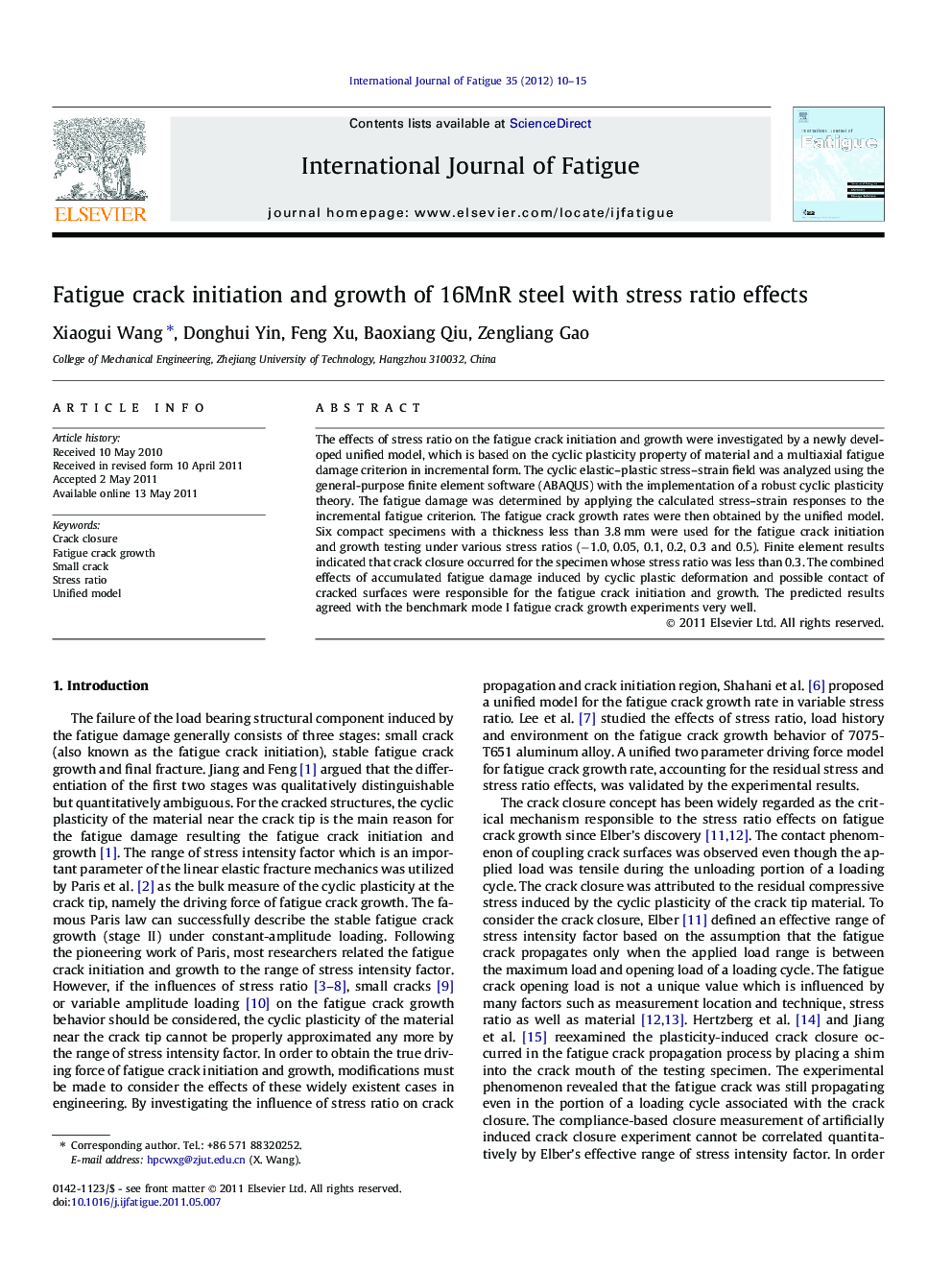| Article ID | Journal | Published Year | Pages | File Type |
|---|---|---|---|---|
| 777775 | International Journal of Fatigue | 2012 | 6 Pages |
The effects of stress ratio on the fatigue crack initiation and growth were investigated by a newly developed unified model, which is based on the cyclic plasticity property of material and a multiaxial fatigue damage criterion in incremental form. The cyclic elastic–plastic stress–strain field was analyzed using the general-purpose finite element software (ABAQUS) with the implementation of a robust cyclic plasticity theory. The fatigue damage was determined by applying the calculated stress–strain responses to the incremental fatigue criterion. The fatigue crack growth rates were then obtained by the unified model. Six compact specimens with a thickness less than 3.8 mm were used for the fatigue crack initiation and growth testing under various stress ratios (−1.0, 0.05, 0.1, 0.2, 0.3 and 0.5). Finite element results indicated that crack closure occurred for the specimen whose stress ratio was less than 0.3. The combined effects of accumulated fatigue damage induced by cyclic plastic deformation and possible contact of cracked surfaces were responsible for the fatigue crack initiation and growth. The predicted results agreed with the benchmark mode I fatigue crack growth experiments very well.
► Stress ratio effects on the fatigue crack behavior were studied by an unified model. ► The model incorporates cyclic plasticity and multiaxial fatigue damage criterion. ► Fatigue crack growth experiments were carried out under different stress ratios. ► Finite element results indicated that crack closure occurred for smaller stress ratio. ► Cyclic plasticity and crack closure were responsible for the fatigue crack behavior.
